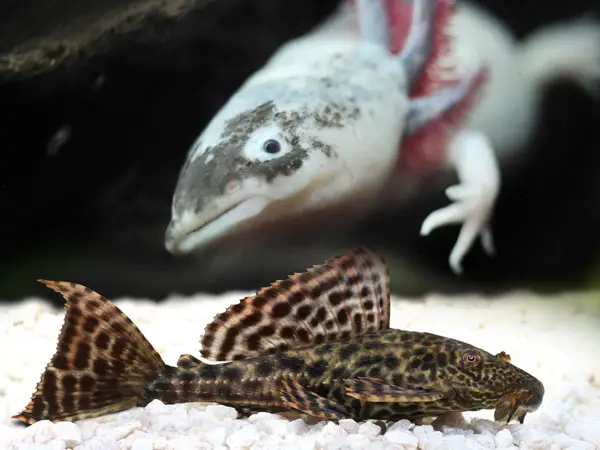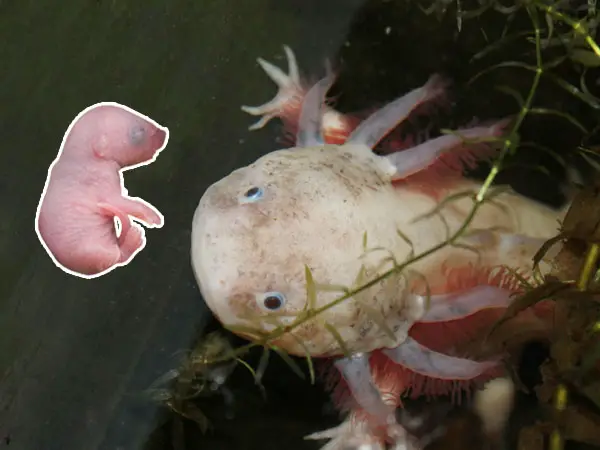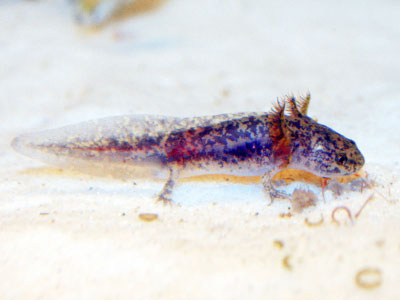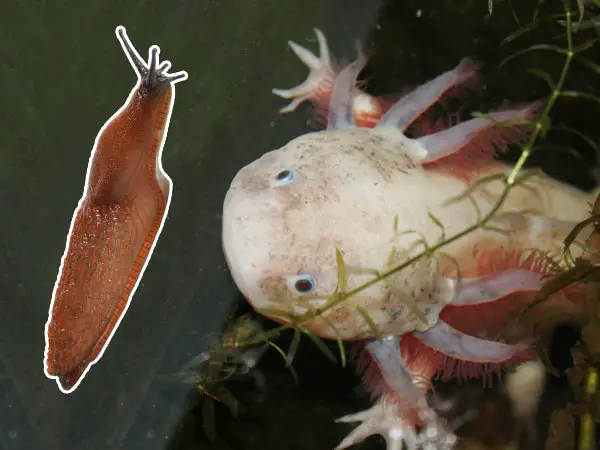One of the questions we see often is whether axolotls are compatible with fish. They can live with some fish, depending on their water requirements and living conditions.

If you’re wondering whether axolotls and pleco fish can live together, then you’re in the right place.
The quick answer is that axolotls and pleco fish are not the most compatible animals to live together, and for various reasons. Firstly, the main thing stopping you from doing this is the size difference between the two animals. Pleco fish will sometimes even reach about 2 feet in size, which is much larger than what axolotls are.
Additionally, their water requirements are also largely different. Axolotls normally live in colder waters, while pleco fish will prefer warmer, almost tropical conditions. There are also differences in their diets, behaviors, and other things that prevent them from living together.
So we would not advise you to keep axolotls and pleco fish together. If you want to read more about why this is, then read on, and make sure you don’t make this mistake.
Reasons Why You Should Not Keep Axolotls and Pleco Fish Together
Here are some of the top reasons why these two animals don’t belong together.
1. Size Difference
The elephant in the room is obviously the difference in size between these two animals. Compared to pleco fish, axolotls are relatively small. They will only reach between 12-14 inches in size, while pleco fish will reach up to 2 feet in size. This means they will need a larger tank, more space to survive, and they will take away space from the axie.
The size difference is too big to help these two animals live together. This reason alone should prevent you from keeping them together, but there are other differences, too.
2. Temperature Difference
There’s also the temperature difference that we need to talk about. Firstly, axolotls will like to live in slightly colder waters, rivers, and streams. Pleco fish, on the other hand, will live in more tropical areas.
The normal temperature range axolotls will require is between 60-65 degrees Fahrenheit (16-18 degrees Celsius). That’s very different and lower than what plecos require, which is between 72-82 degrees Fahrenheit (23-28 degrees Celsius).
This is another huge reason why you should not keep these two animals together, as they would just not survive together comfortably, especially not in the same conditions.
3. Diet Difference
There is also a slight difference in the dieting requirements of each animal species. Plecos are omnivores, although they will also like to eat a primarily vegetarian diet.
Axolotls, on the other hand, will much more prefer to eat meat-based foods. This includes various live foods as well as frozen foods such as insects, smaller invertebrates, and other lives foods. This difference is not that big, although it does mean a level of inconvenience because you would have to feed each of these two animals separately, causing you to take even more time to keep both happy.
4. Plecos Have Spines
Now, this might not seem like such a huge and important difference. But the problem with this is that plecos will be stronger than axolotls, as they have a spine.
Axolotls, then, would not be able to survive as well as plecos would. Also, if you would have smaller, baby plecos inside just to feed your axolotls, that would also not work. The bones inside would get stuck in the axolotls and would cause impaction.
In any case, this is yet another important difference that means these two animals are not great tank mates for each other.
5. Plecos Chew on Everything
Lastly, another thing to keep in mind is that plecos like to chew on almost everything they will find in their way. This means they are also likely to chew on the body of the axolotl, as they will try to eat the slime off of their bodies.
This is not great since axolotls don’t have a very thick protective coat. It could cause damage to their body and their skin.
Plecos chew on other things, too. They will chew on objects with algae as they will like to eat the algae that collects.
Can Axolotls and Bristlenose Plecos Live Together?
If you’re wondering about this, then the difference between these animals are not massive. This means that the answer stays the same – no.
You should not keep these two animals together, and the reasons for this are the same as we mentioned about. Plecos are larger than axies, they have different water requirements, they eat different foods, and will chew on axolotls, too.
For these reasons, Bristlenose plecos are also bad tank mates for axolotls, and you should avoid doing this, too.
What Algae Eaters Can You Keep with Axolotls?
So we’ve seen that plecos, who are algae eaters, are not the best tank mates for axolotls. But are there any other species that eat algae that you can keep with axies?
Unfortunately, no. Most other algae eaters have the same requirements and bring the same problems as plecos do. Some are also larger, but arguably the biggest issue with algae eaters is that they like to chew on other things and animals.
Because of that, they might also start chewing on your axolotls in order to eat off the slime from their bodies. And this can create problems for your axies that might be hard to solve. So this is the main reason why algae eaters are not the best tank mates for axolotls.
Conclusion
The conclusion is that you should avoid keeping axolotls and plecos together in the same tank. Plecos are much larger than axolotls, which means they need much more space to survive, they will steal space from axolotls.
They also have different water requirements and dieting needs. Axolotls require colder water than plecos do, which is a big problem. They also have different dieting problems, and plecos like to chew on other animals, so those are all the main reasons why these two are not the best tank mates.




